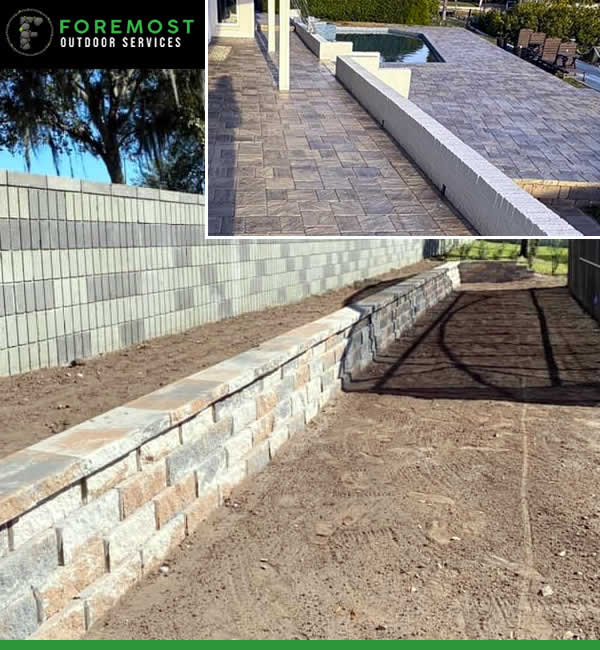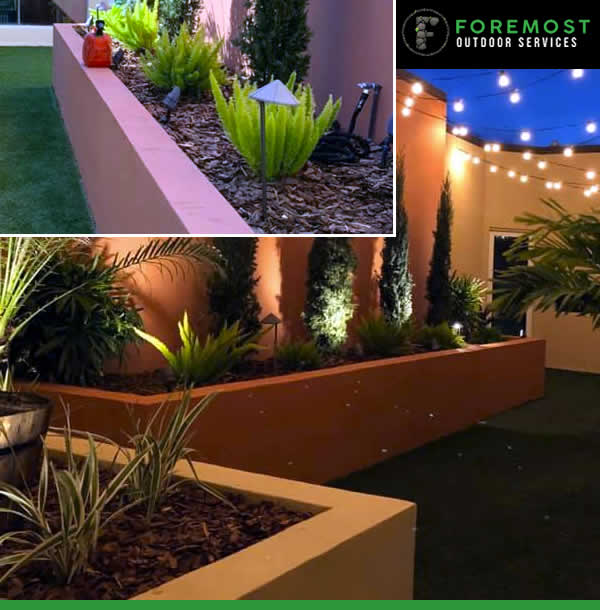Retaining wall construction is essential for managing soil erosion and creating beautiful outdoor spaces. Whether you're looking to enhance your landscape's aesthetic appeal or need practical solutions for uneven terrain, understanding the importance and techniques of retaining wall construction is crucial. In this article, we'll explore everything you need to know about constructing retaining walls, their benefits, materials, and common questions asked by homeowners.
When considering retaining wall construction, it's important to explore various retaining wall ideas that align with your landscape design and functional needs. Retaining walls are not only durable but also offer versatility in design, allowing for diverse aesthetic choices ranging from sleek modern lines to rustic finishes that blend seamlessly with natural surroundings. If you're searching for retaining wall construction near me, local contractors can provide valuable insights and expertise tailored to your specific soil conditions and property requirements. Collaborating with professionals ensures a well-designed structure that enhances your yard's functionality while maximizing visual appeal. Whether you envision tiered gardens or simple boundary walls, the right design can transform your space into a stunning outdoor environment.


The material you choose for your retaining wall can significantly affect its durability and appearance. Common materials include:
Each material has its pros and cons, and the best choice depends on your specific needs and budget.
Engineering plays a crucial role in retaining wall construction. Walls must be designed to withstand the pressures of soil and water. This often involves complex calculations and possibly the use of drainage systems to relieve hydrostatic pressure behind the wall.
A retaining wall is primarily used to retain soil and prevent erosion. It stabilizes land on slopes, creating flat areas for gardens, patios, or pathways. Additionally, retaining walls manage water drainage effectively, helping to protect your landscape from flooding.
Whether a permit is required for retaining wall construction depends on local building codes and the wall's height and location. Always check with your local authority to determine the necessary regulations.
Building a retaining wall involves several steps:
The height of a retaining wall can vary based on its purpose and construction style. Generally, walls can range from a few feet up to 20 feet or more, but it’s crucial to consult with a professional engineer for higher walls to ensure safety and stability.
Yes, incorporating a drainage system behind a retaining wall is crucial. Without proper drainage, water can build up and create hydrostatic pressure, which may lead to structural failure. Drainage solutions may include perforated pipes and gravel fill to facilitate water movement away from the wall.
The lifespan of a retaining wall depends on the materials used and the quality of construction. For example, concrete and stone walls can last 50 years or more with proper maintenance, while timber walls may last 10-20 years. Regular upkeep and inspections can extend your wall’s longevity.
Building a retaining wall on a slope requires careful planning and execution to ensure stability and functionality. Start by assessing the area to determine the slope's angle and the wall's height, which helps in designing a wall that can adequately hold back the soil. Choose suitable materials such as concrete blocks, timber, or natural stone that can support the wall’s weight.
Gather the necessary tools, including a shovel, level, hammer, string line, and measuring tape, along with materials like blocks, gravel, drainage pipes, and landscape fabric. Next, clear the area where your retaining wall will be built, excavating about 6-12 inches deep to prepare the site. It’s essential to create a level foundation of crushed gravel or concrete, which you should compact well to ensure it is stable.
Incorporate a drainage system by placing a perforated drainage pipe at the bottom of the wall to prevent water buildup and cover it with gravel and landscape fabric. Begin stacking your blocks or stones from the lowest point of the slope, ensuring each layer is even by using a level. For added strength, stagger the joints between blocks on each layer, which enhances stability.
As you build, backfill with gravel and soil to secure each layer, and compact the backfill to reduce settling. Once the desired height is reached, add a capstone or finish to enhance the wall's aesthetic appeal.
Constructing a retaining wall against your house requires extra precautions. Start by checking local regulations to consult building codes and permits, especially since this wall will sit adjacent to a structure. Assess how the wall will impact drainage around your house to avoid water pooling, ensuring there is a slight slope away from the foundation.
Gather materials that match your home’s landscaping style, using options such as bricks, concrete blocks, or natural stone. The tools you’ll need include a shovel, level, hammer, and drill. Excavate the area focusing on the foundation of the house, extending outwards enough to accommodate the wall. Build a solid foundation with at least 6 inches of crushed stone or concrete to prevent settling and to provide a robust support system.
Incorporate a drainage system similar to that used in a slope wall by including a perforated pipe at the base of the wall and backfilling with gravel. Begin laying your blocks or stones from one end to the other, making sure each layer is level and secure. As you backfill with gravel and soil, monitor the water flow to ensure adequate drainage away from your foundation.
Building a retaining wall with concrete blocks is straightforward and results in a durable structure. Start by planning the project and assessing the location for slope and soil type, as well as deciding how high you want your wall to be. Choose the appropriate materials, which will include concrete blocks, gravel, drainage pipes, landscape fabric, and mortar.
Gather your tools such as a level, shovel, trowel, and measuring tape to facilitate the construction process. Excavate a trench for the foundation that is at least twice the width of the concrete blocks and deep enough to accommodate drainage materials. Once the trench is ready, fill it with compacted gravel to create a sturdy base, ensuring it is level for the first row of blocks.
Begin laying your first row of blocks, starting at one end of the trench, and keep it level throughout. If you are using mortar, spread a thin layer on the bottom of each block. As you stack additional rows, stagger the seams of the blocks for added strength, checking the level of each layer as you go. Finally, ensure to install a perforated drainage pipe behind the wall to facilitate effective water drainage, thus preventing any future structural issues.
Effective retaining wall construction requires careful planning and expert execution. By understanding the benefits, materials, engineering, and construction process, you can ensure your retaining walls are durable, functional, and aesthetically pleasing. Don't hesitate to reach out for assistance with your project—your perfect landscape is just a call away!
Ready to transform your outdoor space with expert retaining wall construction? Contact us today for a free consultation and let our experienced team help you create the perfect solution for your landscape needs!
At Foremost Outdoor Services, we specialize in providing high-quality retaining wall construction tailored to enhance your landscape's beauty and functionality. Our experienced team guides you through every step of the process, from initial planning and design to the final touches that bring your vision to life. We understand the importance of soil retention, water management, and aesthetic appeal, and we offer a variety of materials and designs to meet your specific needs. Whether you require a retaining wall for erosion control, garden enhancement, or structural support, Foremost Outdoor Services is dedicated to delivering durable solutions that add value to your property. Reach out today to discover how we can transform your outdoor space! Check our service areas below to see if we're available in your city, and let us bring Foremost Outdoor Services to your neighborhood.
Brevard County, FL
Seminole County, FL
Volusia County, FL
Contact Information
Hardscapes
Irrigation
Landscape
Exterior Cleaning